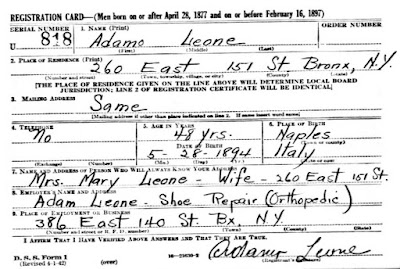Years ago I thought if I broke up my housework into smaller tasks, I'd be more likely to get it all done. Wash the laundry on Monday, clean the bathrooms on Tuesday, change the sheets on Wednesday—like that.
I found out a strict schedule doesn't work if you don't want to do the tasks!
But what if this schedule consisted of things you basically love to do—like all things genealogical?
Imagine you have two hours you can carve out of most days—say one hour early in the morning and one hour right after dinner.
If you apply yourself to specific tasks, think of the steady growth your strong and accurate family tree will see!
My challenge to you (and to myself) is to develop a Family Tree Calendar and use it to push yourself toward a better and better body of research.
Here are some suggested tasks to work in one-hour sprints:
- Make an inventory of what you've collected. I keep a spreadsheet with columns for things like birth, death and marriage records, census forms, draft cards, etc. And I have one person on each line. This one document shows me what I have and what I need.
- Organize your documents into folders. Hopefully you've got some sort of a system going, but think about how you can improve it in a way that makes it crystal clear what is where.
- Annotate the documents you store in your family tree software. Your software probably lets you add notes to a file you've attached to an ancestor. Think about the family historian who will come after you. Annotate the documents in a way that would let anyone else find them the same way you did.
- Find the missing documents for one nuclear family. Use your inventory of documents you've collected, focus on one family, and try to locate the missing documents. Tie up those loose ends.
- Use a tool to analyze the flaws in your tree. Family Tree Analyzer is one such tool that will show you errors you didn't realize were there. How many can you resolve in one hour?
- Fill in the missing GEDCOM facts. When you do locate a census sheet for a family, do you add the residence, date, and occupation facts for each member of the household?
Even if there are some tasks you truly don't enjoy (like beefing up your source citations), going at it for one uninterrupted hour can't hurt you.
Make a plan and use it to keep yourself on course. I've been known to wander off on many a tangent, documenting a very distant family simply because the information was there for the taking.
That's fine—but save the tangents for the weekend or other free time.
Try this: Spend one month treating your research like a paid job, and see how far you can go!
Let me know how you do. And tell me which tasks you added to your list!
And if you're a big fan of organization, read my Work in Batches to Strengthen Your Family Tree.













